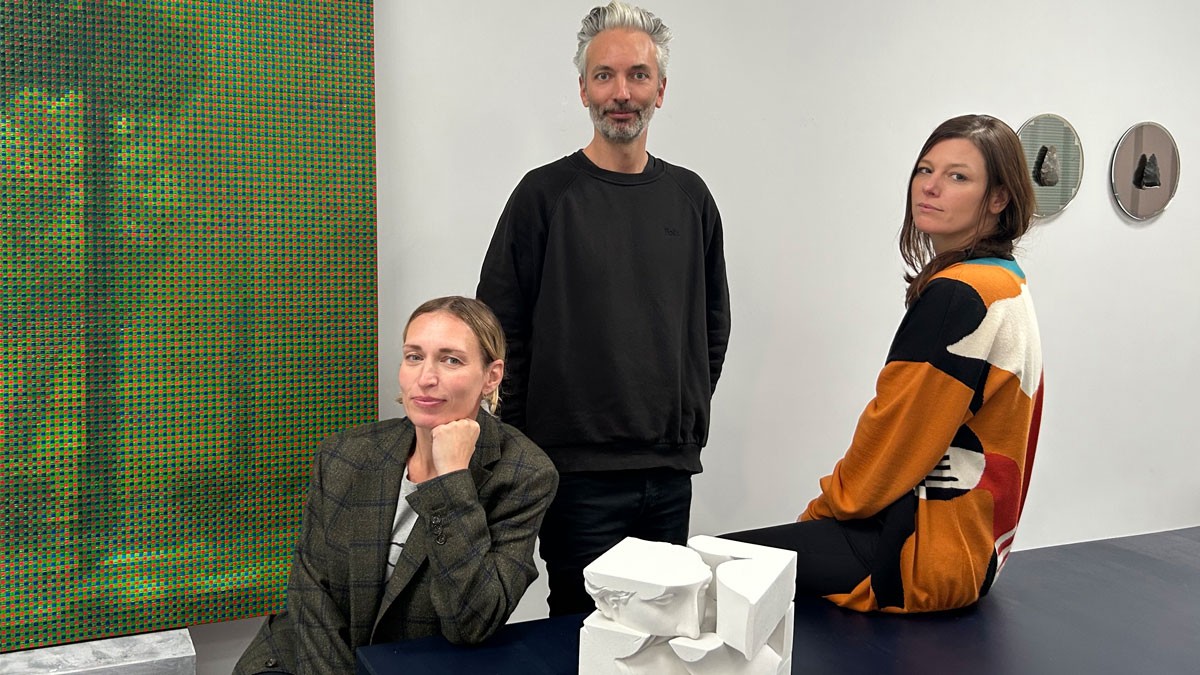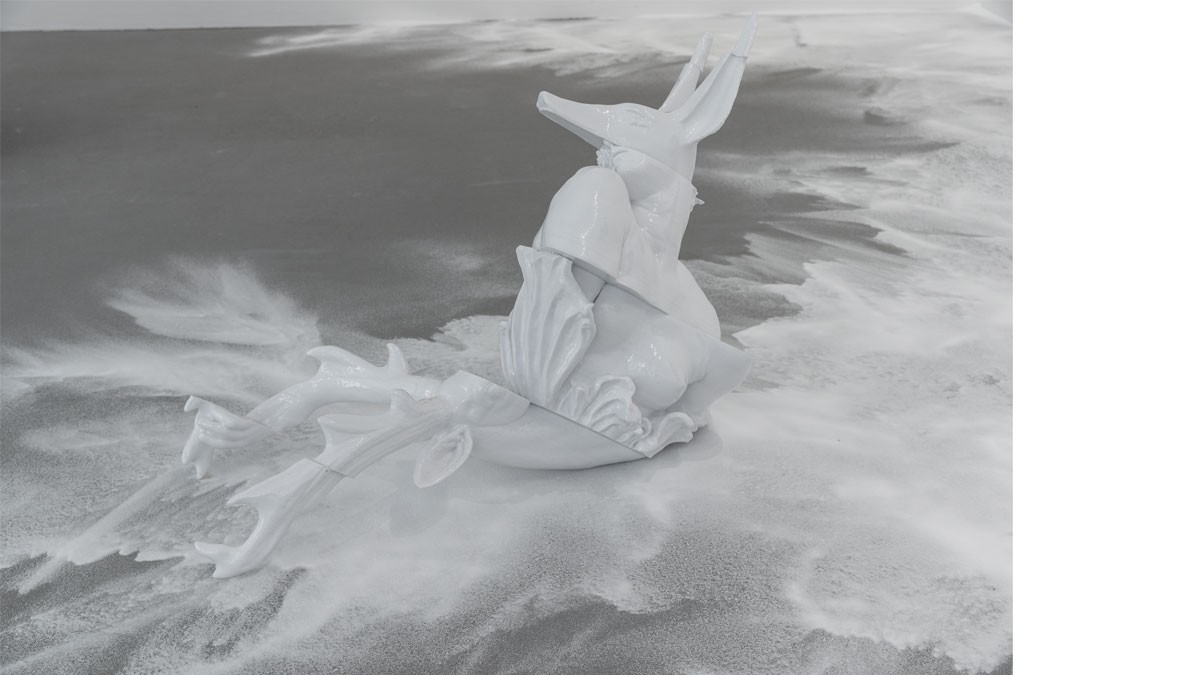Endless food for thought
What is real? And what is illusion? Or doesn't it also depend on the perspective? On the time level? And on interpretation in general? The clarification of this age-old question can be approached in a purely scientific way, which can easily become boring - or artistically and at the same time on the basis of scientific research. If you like, this is one of the open trade secrets of the artist collective Troika.
As the name suggests, this is a trio that came together in 2003 while studying art in London and still plans and realises everything together today. Whether through paintings, sculptures, films or expansive installations. For the two Germans Eva Rucki and Conny Freyer and the Frenchman Sebastian Noel, the contrast between analogue and digital realities has long since become marginal. In their opinion, it is no longer possible to distinguish between them anyway. A few years before other artists began to explore digital realities for themselves, Troika experimented with them as a matter of course.
Behind this lies a deep interest in the blueprint of things and the perceptible world itself, and sometimes even more so in the invisible processes that determine existence. Extensive research into the history of technology and natural philosophy is naturally part of Troika's work. This leads to installations such as ‘Anima Atman’: thistles grow out of a barren landscape of silicon stones, moving as if in slow motion. Plants ‘know’ how to adapt to their surroundings, and thistles in particular survive almost everywhere. Even on wasteland created by the mining of silicon for chips and batteries.

The three members of the artist collective Troika: Eva Rucki, Conny Freyer and Sebastian Noel. Photo: Studio Troika, 2022
The blueprint of things
The brave new world of computers is also the subject of the ‘Obsolete Landscapes’ series, which shows fragments of desktop backgrounds from technology giant Apple. Fragments, because only the sky remains, the attractive mountain ranges or dream islands have been deleted by Troika without further ado. No landscape is untouched any more, so why constantly pretend to be a postcard idyll? In the Caspar David Friedrich Year, it would be hard to find a more striking commentary on the fiction of an ideal landscape, let alone an unspoilt one. Since the beginning of September, the works by Troika have fitted perfectly into the exhibition building designed by Tadao Ando - from changeable geometric figures to oppressively aesthetic server shots of natural disasters. ‘PINK NOISE’ is the title of the exhibition, which can be seen until 16 March 2025.
Troika also creates large-format wall objects made up of cubes, which will be on display at ART COLOGNE at the max goelitz gallery stand. ‘Reality is Not Always Probable’ is the title of this series of works, which Troika has been varying again and again since 2018. Algorithms have designed what appear to be richly ornamented tapestries or embroidered pictures. Only the first row is given, as a basis so to speak, and the computer takes care of the rest based on precise specifications. This creates unpredictable compositions, each result is a surprise - the cube as a pixel or image cell is certainly no coincidence.

The work ‘In a Forest of Red, Green and Blue (Aktaion)’ by Troika from 2023. Courtesy of max goelitz; Copyright the artists; Photo: Dirk Tacke
Collaborative approaches
Max Goelitz, who founded his eponymous gallery in 2020 in the Munich premises of Häusler Contemporary, supports artists who position themselves clearly. The additional Berlin location, which will open in 2022, offers ideal conditions for comprehensive statement presentations. At the same time, the 39-year-old from Augsburg pursues a collaborative approach, as he emphasises. As part of the Collaborations programme, he has developed a spatial concept for ART COLOGNE in which works by the Troika group enter into a dialogue with the sculptural works of Nicolás Lamas.
Lamas is a kind of archaeologist who is bold enough to confront old vessels with parts from car mechanics. Or to place an antique torso - the much-reproduced head of Laocoon, for example - on a scrapped Xerox copier. The artist, who was born in Lima in 1980, primarily combines relics in his assemblages. An old industrial refrigerator (‘Posthuman ecologies’, 2023) then becomes a repository for discarded everyday human objects and organic objects from nature - bones, coral and wasp nests, for example. In his heterogeneous, thoroughly bizarre systems of organisation, Lamas is concerned with the relationship between human and non-human objects, which is often determined by power structures. Those who see themselves as the crown of creation easily become overconfident and so-called progress becomes a dilemma.
With Lamas, it is the look into the past that could form a vision for the future. Troika plays with digitality and its fluid transitions to the analogue. Both cultivate an alternative view of reality and thus provide endless food for thought.
Author: Christa Sigg

